sun
Latest
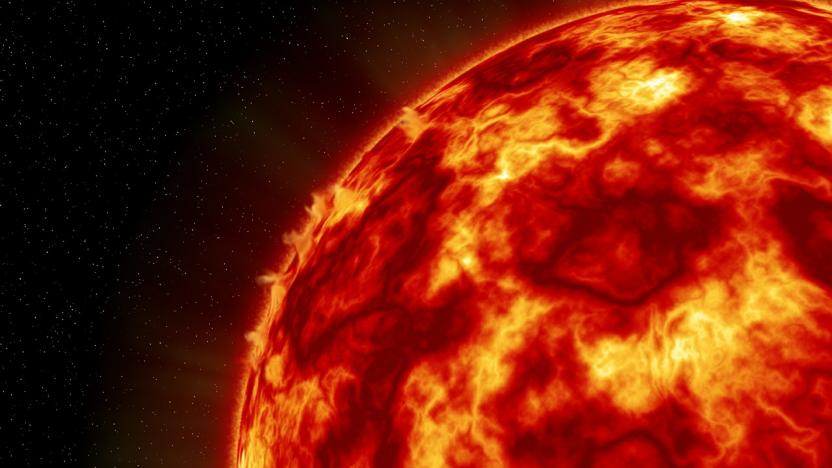
A huge solar flare temporarily knocked out GPS communications
On the morning of 6 September the sun let out two pretty sizeable burps of radiation. Both were considered X-class -- the strongest type of solar flare -- with one of them proving to be the most powerful since 2005. If a solar flare is directed at Earth, which these ones were, it can generate a radiation storm that interferes with radio and GPS signals. The biggest flare ever recorded, in 2003, was so strong it even knocked out NASA's solar measurement equipment. These recent belches weren't quite on par with that, but they were enough to jam high frequency radios and interfere with GPS systems for about an hour on the side of the Earth facing the sun. Put your hand over your mouth, sun! Rude!
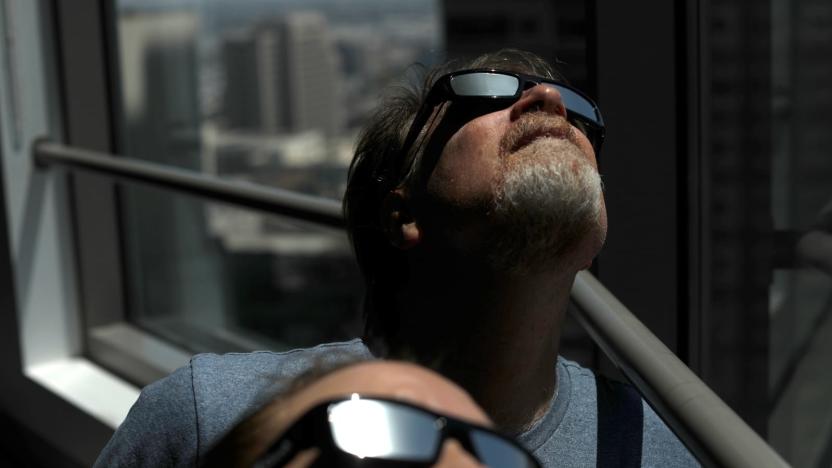
Amazon offers refunds for dodgy solar eclipse glasses
Did you buy a low-cost pair of eclipse glasses hoping to watch the August 21st solar eclipse without spending a fortune? Amazon might be reaching out to you. The company has confirmed a recent Verge report that it's "proactively" refunding purchases of eclipse glasses that might not meet the ISO 12312-2 safety standards needed to protect your eyes. It also appears to be pulling product listings for those glasses to be on the safe side.
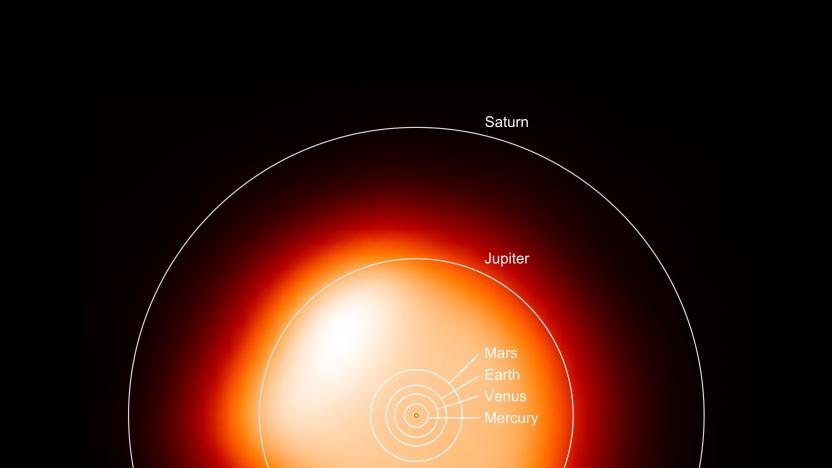
Astronomers capture best picture yet of the star in Orion’s armpit
Betelgeuse isn't just an etymological inspiration for Michael Keaton's best role, it's a colossal star forming the right shoulder in the well-known constellation Orion. Astronomers used the Atacama Large Millimeter Array (ALMA) in Northern Chile to photograph it, producing the most detailed image yet of any star besides our own sun.

NASA goes all-out with livestreaming for this summer's total eclipse
The US will experience its first continent-wide total solar eclipse in 99 years on August 21st, and NASA wants to make sure you see it... including perspectives you just couldn't get otherwise. It's promising an hours-long livestream that will cover the eclipse from seemingly every angle. There will be video on the ground as the sky briefly goes dark, of course, but there will also be views from aircraft, high-altitude balloons and the International Space Station. If you don't live in an eclipse area or just can't afford to step outside, this is probably your best bet at seeing what the fuss is about.

Our sun used to have a twin star named Nemesis
Astronomers have long been puzzled by the fact that our sun doesn't have a companion star. After all, most similar stars are part of a binary, or even triplet, system. Now, scientists may have confirmed a long-held theory: The sun did once have a companion star that has been dubbed "Nemesis."
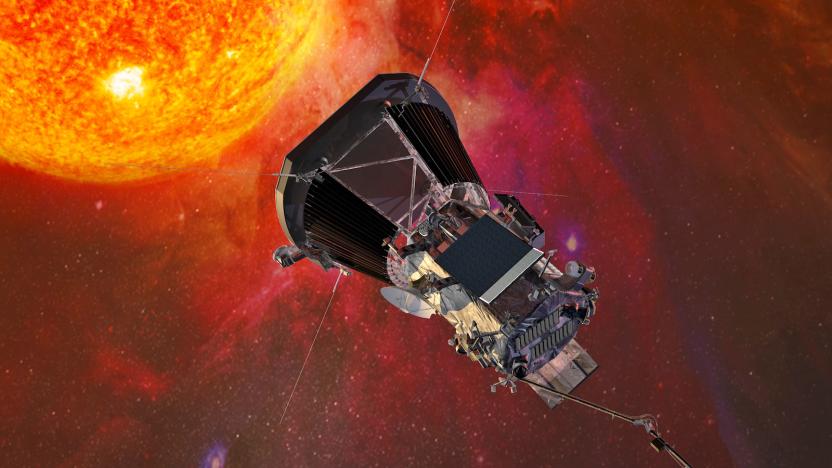
NASA’s first mission to touch the sun launches in 2018
Today, NASA announced the details of a mission that will take us directly into the sun's corona. Nicola Fox, the Mission Project Scientist for the Parker Solar Probe Mission at Johns Hopkins University Applied Physics Laboratory, revealed the probe's mission to the public: to touch, measure, and analyze the atmosphere of our sun.
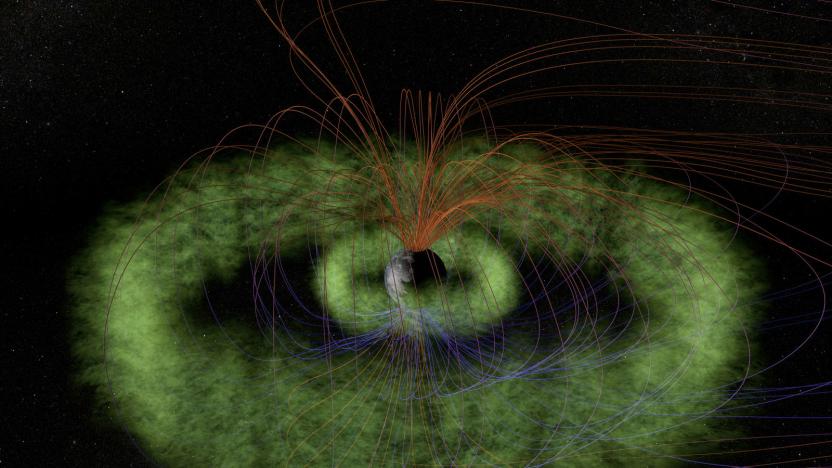
Earth's radio signals may be protecting it from space radiation
The Earth's atmosphere bears precious little resemblance to what it looked like at the start of the Industrial Revolution. As radio technology has advanced and spread, the signals that transmitters produce -- specifically the Very Low Frequency (VLF) variety -- have changed the way that the upper atmosphere and the Van Allen Radiation Belts interact, according to a study recently published in the journal Space Science Reviews. In effect, these radio waves may be enveloping the globe like an electromagnetic comforter, protecting it from satellite-frying space radiation.
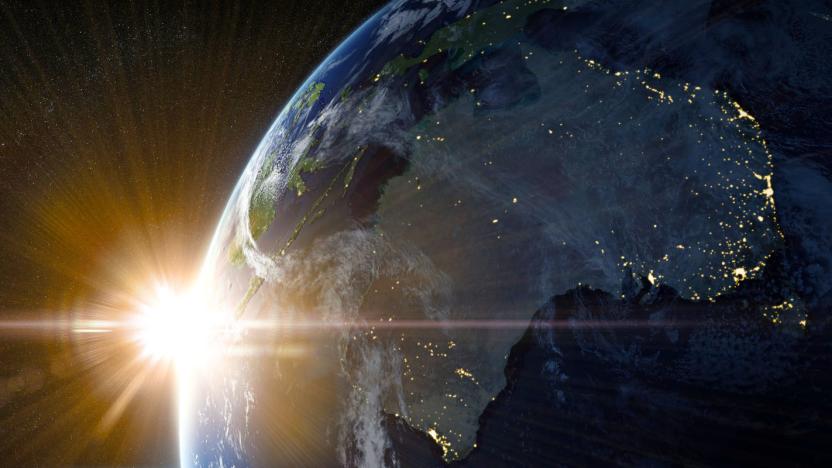
NASA plans to make a telescope out of the Sun
As NASA astronomers peer further and further into space, they require ever larger and more powerful telescopes to do so. That's why one team of researchers from the Jet Propulsion Lab have proposed using the biggest object in our solar system, the Sun, as a cosmic magnifying glass.

NOAA's GOES-16 weather satellite takes its first solar images
NOAA's next-gen weather satellite GOES-16 beamed back photos of the Earth and the moon back in January, but that was just a taste of what it can do. Now, the Solar Ultraviolet Imager (SUVI) onboard the satellite has taken its first solar images, and NOAA has stitched them together to create a video that you can watch after the break. The images, taken on January 29th, show a large coronal hole in the sun's southern hemisphere. Coronal holes are parts of the solar surface where the corona (or outer atmosphere) looks darker than usual.

NASA to announce a 'discovery beyond our solar system' tomorrow
Exoplanets, those that orbit stars beyond our own Sun are the most likely places that we'll discover extraterrestrial life. On Wednesday, February 22nd, NASA is planning to announce a "discovery beyond our solar system" at a press conference in Washington DC.

NASA is crowdsourcing the search for exoplanets
To those of you who dream of going to space: Sorry, but that may never happen. However, NASA is once again counting on the public for help understanding what's beyond our world. All we have to do is look at some photos online. Today marks the launch of Backyard Worlds: Planet 9, a project that relies on everyday people to help scientists identify objects near our solar system. These celestial bodies appear to move across the sky, but computers have a hard time finding things like brown dwarfs and planets in the noisy images. This means manually searching the photos is the most effective method to get the job done.

Gamma ray telescope spots ancient, intense black holes
NASA's Fermi gamma ray telescope has been working overtime, it seems. Scientists using the instrument have spotted extreme astronomical phenomenon both at the far edge of the universe and close to home. They've detected the farthest known blazars, or galaxies whose central black holes are so massive (over 1 million times the Sun's mass) that they emit extremely intense light in every spectrum, including gamma rays. The oldest example existed just 1.4 billion years after the Big Bang -- ancient compared to the previous record-setter, which was visible "just" 2.1 billion years after the birth of the universe.
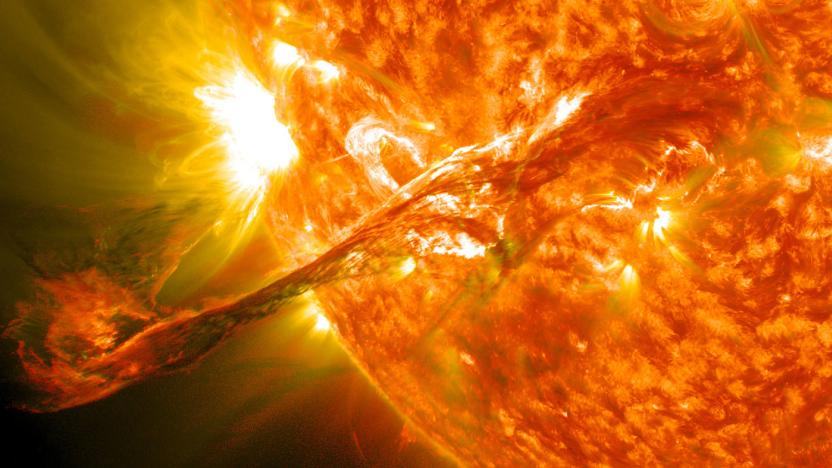
Europe's space agency plans to launch a space-weather satellite
A few years from now, we might have the power to make more accurate space weather forecasts thanks to an ESA satellite. The European Space Agency plans to launch a solar-monitoring space weather probe in 2023 to keep an eye out for Coronal Mass Ejections (CME), and it's hoping to send it to a stable orbit called the Lagrange point 5. That location will give the satellite a unique side-on view of the surface of the sun that's bound to face Earth in four to five days.

ICYMI: Sorting crops with artificial intelligence
try{document.getElementById("aol-cms-player-1").style.display="none";}catch(e){}Today on In Case You Missed It: Google's Tensor Flow machine learning technology helped create a device to sort through massive amounts of cucumbers at a farm in Japan, sorting the vegetables by quality grade so that humans don't have to do it manually. Meanwhile, an Australian scientist created an ink that changes colors when exposed to sunlight, which could theoretically help people from getting a sunburn. We also touched on the new internet-connected pet toy from Acer and rounded up the biggest headlines of the week for you in TL;DR. Be sure to check out IBM Watson's movie trailer and read about SpaceX's rocket explosion. As always, please share any interesting tech or science videos you find by using the #ICYMI hashtag on Twitter for @mskerryd.

Solar dish sets steamy thermal energy efficiency record
In the hunt for ever more reliable and efficient green energy production, the Australian National University (ANU) has developed a solar dish with an incredibly high sunlight-to-steam conversion rate. That's right, steam. Instead of photovolatic solar panels, which convert the sun's rays directly into electricity, the so-called "Big Dish" reflects them back at a receiver, suspended in mid-air, which converts water into steam. The gas can then be used to power a motor, or stored for long periods as molten salts. The latest breakthrough? A new receiver that's 97 percent efficient.
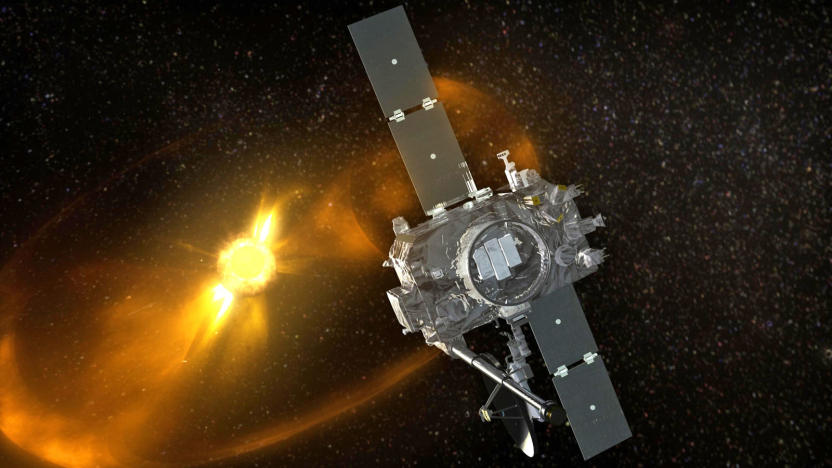
NASA regains contact with spacecraft after a 2-year silence
When mission crews lose contact with a spacecraft or lander for a significant amount of time, that's usually a bad sign... ask the European Space Agency if you want to know why. However, NASA just showed why you shouldn't always give up hope. It reestablished contact with STEREO-B, one of two probes studying the Sun and solar weather, after nearly two years of communications silence. The team had lost its connection during a test of the ship's command lost timer on October 1st, 2014, but kept trying numerous recovery strategies (most recently using the Deep Space Network) until they heard back early on August 21st.

NASA films Mercury crossing the sun's surface
You don't have to wait for years to watch Mercury crossing the sun if you missed NASA's livestream earlier. The agency's Solar Dynamics Observatory has captured the planet's transit across the star's fiery surface on film and has even uploaded a time-lapse video of the images on YouTube. SDO is the same spacecraft NASA launched in 2010 to study the sun's magnetic field. The celestial event occurred on May 9th, from 7:12 AM to 2:42 PM Eastern, and it only happens around 13 times every century.
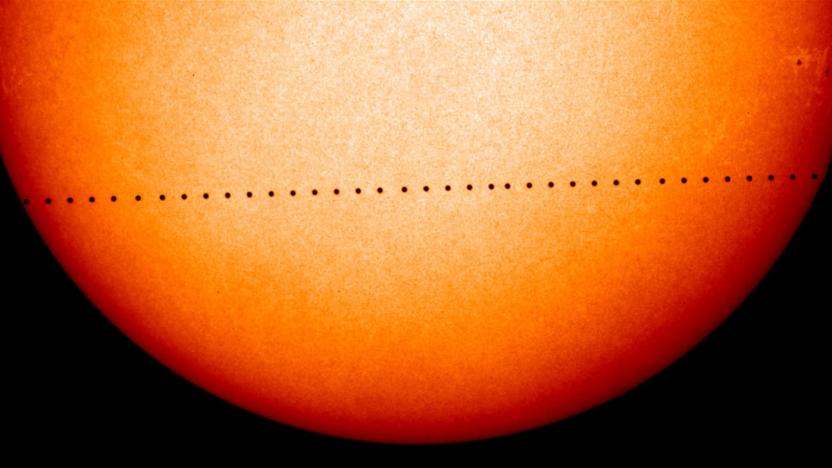
Watch Mercury cross the Sun starting at 7AM Eastern
Mercury might orbit the Sun every 88 days, but seeing it cross in front of the Sun is much rarer. That only happens roughly 13 times each century, and the technology to safely watch this happen hasn't been widely available until recently. However, you're in for a treat this time around. Mercury is poised to transit across the Sun on May 9th starting at about 7:12AM Eastern, and numerous sites (including NASA and Slooh) are offering live footage of the crossing until it finishes at around 2:42PM. Given that you probably don't have a telescope and the solar filter needed to protect your eyes, this is likely the best way to watch.
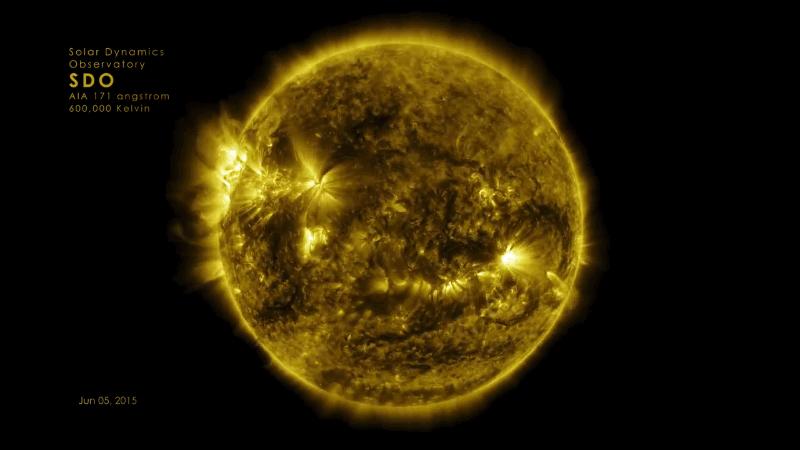
One-year timelapse video of the sun shows its dancing corona
NASA's Solar Dynamics Observatory was only designed to fly for five years, but it has celebrated six years of 24/7 solar observation on February 11th. The ultraHD video below the fold is a timelapse that stitches together images the spacecraft captured during that sixth year, from January 1st, 2015 to January 28th, 2016. Since each frame represents two hours and the photos were taken in extreme ultraviolet range, you can clearly see the sun's corona dancing and undulating throughout the video.

Nobel Prize for Physics awarded to neutrino 'flavor' change
The Nobel Prize for Physics has previously been awarded to scientists for things like the study of the Higgs Boson particle and for complicated work that deals with graphene. This year is no different with Takaaki Kajita and Arthur B. McDonald coming across a discovery that has the power to change our current understanding of the universe. The two scientists are being awarded the prize for working out that neutrinos have mass. In case you're not down with physics-lingo, a neutrino is a subatomic particle that travels at (almost) the speed of light and passes through almost anything without effect. In fact, billions of neutrinos are passing through your body as you read this.









